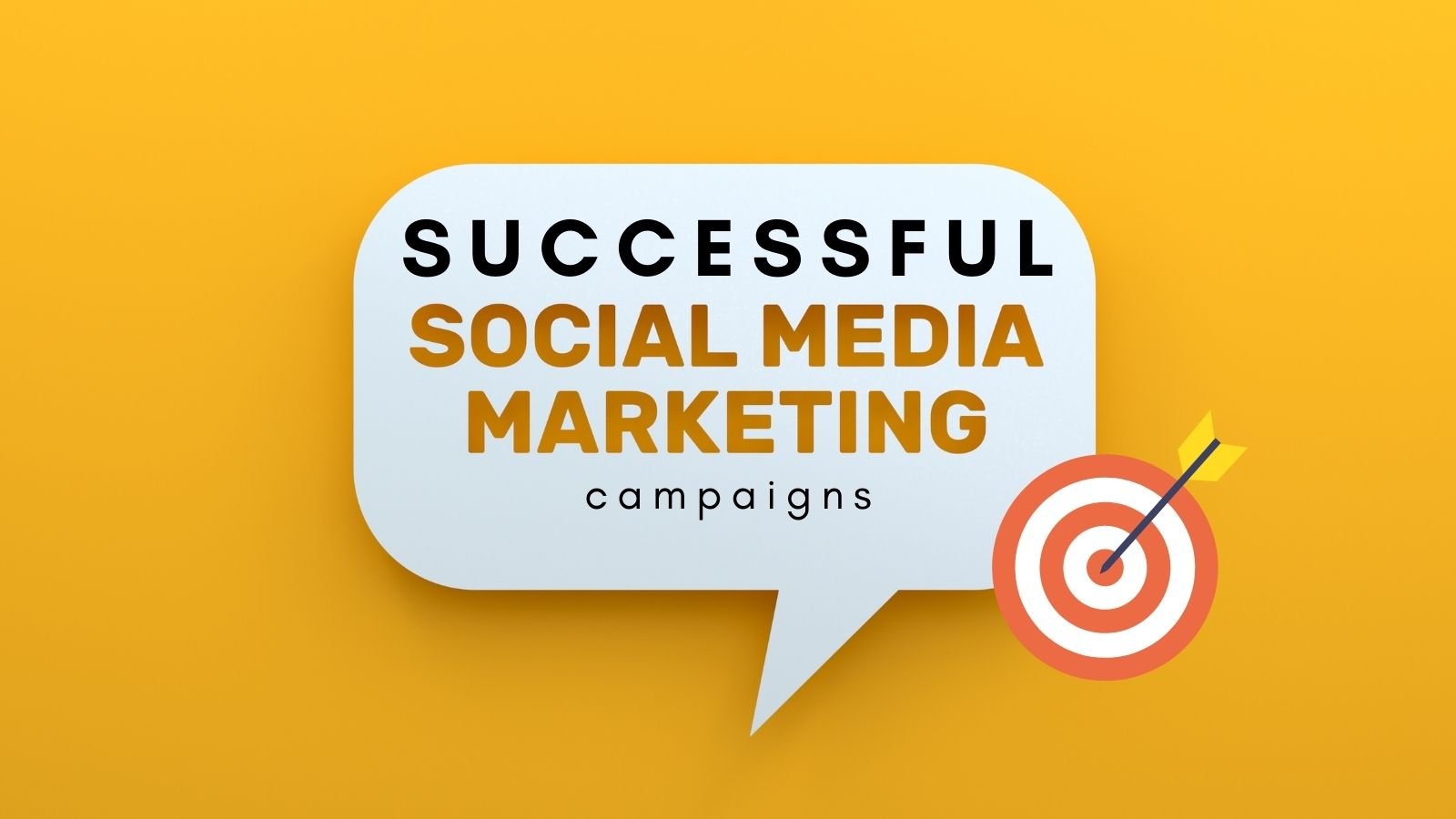Running a social media marketing campaign can feel overwhelming, but it doesn’t have to be. For small business owners, it’s one of the most powerful ways to connect with your audience, build trust, and drive growth—without needing a massive budget.
A well-planned campaign allows you to maximize your reach, engage with your customers directly, and turn followers into loyal customers.
In this post, you’ll get practical tips to help you plan and execute an effective strategy that works for your business.

Table of Contents
Define Your Goals and Target Audience
Before you even think about posting your first social media update, it’s essential to know exactly what you want to achieve and who you’re trying to reach. Without clear goals and a firm understanding of your audience, you might end up wasting both time and money.
1. Establish Clear Social Media Marketing Campaign Goals
What’s the purpose of your social media marketing campaign? Are you trying to boost brand awareness, drive traffic to your website, gain followers, or increase product sales?
Without clear goals, you’ll end up running in circles, unsure of whether your efforts are paying off. Think of your goals as the foundation of your strategy—everything else builds on top of them.
Here’s how you can set clear, measurable goals:
- Stick to Specific Outcomes: Avoid vague goals like “get more attention.” Instead, aim for things like “increase Instagram engagement by 25% in 3 months” or “drive 500 new visitors to my website this month.”
- Align Goals with Your Business Objectives: If your overall objective is growing sales, your campaign might focus on generating leads or promoting a product launch. On the other hand, if you’re looking to gain trust, your goal might involve increasing engagement and posting user-centric content.
- Use SMART Goals: Goals should be Specific, Measurable, Achievable, Relevant, and Time-bound. For example, instead of saying, “I want more followers,” try, “I want to gain 1,000 Instagram followers within 60 days.” SMART goals keep you focused and help you track progress more effectively.
- Track Results: Once you’ve set your goals, decide how you’ll measure success. Will it be likes, shares, traffic numbers, or conversion rates? Having these metrics in place will ensure you know when you’re hitting the mark—or when adjustments are needed.
Remember, having clear goals doesn’t just help keep you on track. It also ensures you’re maximizing your budget and resources in the areas that matter most to your business.
2. Understand Your Target Audience
Now that you’ve nailed down your goals, the next step is identifying who you’re speaking to. Understanding your audience is like having a roadmap—it points you to where your customers are and tells you what they actually care about.
The more you know about them, the better you can create content that grabs their attention. To define your target audience effectively, start by asking yourself a few key questions:
- Who Are They? Think about demographics like age, gender, income level, education, and location. For example, are you targeting busy moms in their 30s or tech-savvy college students?
- What Are Their Interests? Dig into their hobbies, activities, and habits. Are they into fitness, food, or DIY projects? Knowing this allows you to create content that speaks their language.
- Where Do They Spend Time Online? Find out which social platforms they’re on. If your audience is mostly professionals, LinkedIn may be your best bet. If you’re targeting younger users, platforms like TikTok or Instagram might work better.
- What Problems Are They Trying to Solve? Your audience is looking for solutions. How does your business or product help them? For example, if you run a coffee shop, your content might revolve around convenience, community, or quality.
Use tools like Google Analytics, customer feedback, and even social media insights to gather this information. Platforms like Facebook and Instagram offer data on your existing followers so you can see what type of audience you’ve already attracted.
Once you’ve done the research, create a buyer persona—a fictional profile of your ideal customer. For instance, “Sarah is a 35-year-old freelancer who values eco-friendly products and loves trying out new recipes.”
Creating a persona like this doesn’t just help you understand your audience; it also guides you when brainstorming content ideas.
Choose the Right Platforms for Your Social Media Marketing Campaign
Selecting the right social media platforms can make or break your marketing campaign. Not every platform is a perfect fit for your business or your audience, so it’s essential to focus your efforts where they’ll have the most impact.
Think of platforms as neighborhoods—each has its own vibe, and you want to be where your ideal customers are already hanging out. Let’s break this down into two key steps.
Use Inspire To Thrives new calculator tool to find your best social media networks.
3. Analyze Platform Demographics
The first step in choosing the right platforms is understanding where your audience spends their time. Every social media channel caters to a specific group of people, defined by factors like age, interests, and professional status. Take a moment to ask yourself: who are you targeting, and what platforms do they trust the most?
Here’s a quick rundown of the main platforms and their typical user bases:
- Facebook: If your target audience includes older millennials, Gen X, or even baby boomers, Facebook is still a solid choice. With over two billion users, it’s widely popular for building community groups, sharing updates, and running targeted ads. It also works well for businesses that rely on reviews or word-of-mouth recommendations, like local shops or service providers.
- Instagram: Instagram is the go-to platform for visually-driven campaigns. Its stronghold is younger audiences, primarily aged 18-34, and it’s ideal for businesses in fashion, art, food, beauty, or lifestyle. Stories, reels, and carousels let you showcase your brand in creative, attention-grabbing ways.
- LinkedIn: Catering to professionals primarily aged 25-49, LinkedIn is perfect for B2B companies or businesses aiming to connect with industry leaders. It’s also ideal for personal branding and thought leadership efforts. If your campaign focuses on networking or hiring, LinkedIn should be a top priority.
- TikTok: Do you want to appeal to Gen Z or younger millennials? TikTok is where they are—scrolling through creative, bite-sized videos. This platform thrives on humor, trends, and authenticity, making it excellent for businesses willing to experiment with unscripted, entertaining content.
4. Focus on Platform-Specific Content
Once you’ve chosen the right platforms, the next step is creating content that feels native to each one. Not all content works everywhere, and posting the same message across multiple platforms can come across as lazy or disconnected from user expectations.
Instead, tailor your content to match how people interact on each channel. Here are a few tips for customizing your content for specific platforms:
- Facebook: Focus on creating posts that encourage engagement, like polls or questions. Long captions perform well here, so don’t be afraid to tell a story or provide detailed updates. Make use of Facebook Groups if community-building is part of your strategy—it’s a great way to cultivate loyal followers.
- Instagram: Invest in high-quality visuals. Think bright, clean, and attention-grabbing photos or videos. Use Instagram Stories to stay top of mind—these can be more playful or behind-the-scenes. Reels, on the other hand, are essential for reaching new audiences through fun, algorithm-boosted short videos.
- LinkedIn: For this professional platform, focus on offering value. Share articles, videos, or infographics that educate your audience or demonstrate expertise in your industry. Keep captions concise but thoughtful, and don’t hesitate to engage in meaningful conversations in the comments.
- X: Authenticity is the name of the game. Engage with other users on the platform to increase your own reach and don’t post with links. Use those in your threaded posts or use a tool like Creator Buddy.
Create a Social Media Marketing Campaign with a Content Strategy To Drive Engagement
A strong content strategy is the backbone of any successful social media marketing campaign. Without one, you’re left guessing what to post, when to post, and how to keep your audience engaged.
By taking the time to plan your content effectively, you can create posts that not only capture attention but also encourage meaningful interactions. Let’s break it down into actionable steps.
5. Mix-Up Your Content Types
Sticking to one type of content can make your social media feed feel stagnant, and nobody wants that. Think of your content like a buffet—you want a variety of options to keep your audience coming back for more.
People consume information differently, so mixing it up ensures you connect with more viewers. Here are a few content types to incorporate:
- Videos: Short clips, tutorials, or behind-the-scenes glimpses are highly engaging. Videos generally outperform still images when it comes to engagement rates. Platforms like Instagram Reels, TikTok, and YouTube Shorts make video content easier than ever to share.
- Images: High-quality images remain a staple for social platforms. Use them to showcase your products, services, or even user-generated content.
- Stories: Instagram and Facebook Stories are ideal for quick, time-sensitive updates. Use polls, Q&A features, or countdown stickers to make them interactive.
- Infographics: These are perfect for simplifying complex information into bite-sized visuals, especially when appealing to professionals or educators on platforms like LinkedIn.
- Polls and Quizzes: Encourage participation by asking your audience for their opinions. These are quick to execute and foster a sense of community.
When you vary your content types, you not only gain the attention of a diverse audience but also keep your current followers intrigued. Experiment with different formats and study your analytics to see what works best for your brand.
6. Craft an Effective Posting Schedule
Consistency is key in building trust and visibility on social media. Sporadic posting can make your brand seem unreliable, while over-posting might annoy your followers.
- Identify Peak Engagement Times: Not all times are created equal when it comes to social media. For instance, platforms like Instagram and Facebook often see the most activity during lunch hours or early evenings. Use built-in analytics tools, like Instagram Insights or Facebook Page Insights, to track when your followers are online the most.
- Choose a Realistic Frequency: Posting too infrequently can cause your audience to forget about you, while constantly showing up in their feeds might feel like spam. Aim for a manageable posting frequency like 3-5 times per week on Instagram or daily updates on X if that’s where your audience is active.
- Batch Content Creation: Creating posts ahead of time saves you stress and ensures you’re always one step ahead. Use scheduling tools like Buffer or Agorapulse to plan and automatically post content, so you can stay consistent without logging in every day.
When you show up consistently and at the right times, you’re more likely to catch your audience when they’re ready to engage. Think of your posting schedule as a routine—both for you and your followers.
7. Utilize Captions and Call-to-Actions Effectively
Your visuals might grab attention, but it’s your captions that will drive action. A well-written caption can tell a story, build a connection, or inspire someone to take the next step. The trick is knowing how to balance creativity with strategy.
- Include Strong Call-to-Actions (CTAs): Every post should have a purpose, and your CTA is the nudge your audience needs to take action. Whether you’re encouraging them to “click the link in bio,” “share this with a friend,” or “vote in our poll,” make it clear and compelling.
- Use Keywords for Better Reach: Caption optimization is just as important as visual elements in your social media posts. Incorporate primary keywords like “social media marketing campaign” naturally within the text to improve discoverability on platforms that use search algorithms.
- Keep It Concise Yet Meaningful: Don’t waste space. Lead with your most important message and keep your copy tight without being abrupt.
- Make It Conversational: Social media is a place for dialogue, not monologues. Ask questions, use relatable language, or share something personal to encourage comments and shares. For example: “What’s one goal you’re working on this month?
And don’t forget emojis. They’re a simple way to add personality or draw attention to parts of your caption. Just don’t overdo it—one or two is plenty.
By investing time into captions that resonate and inspire, you’ll see a noticeable boost in both engagement and conversions. Your audience wants to connect, so give them a reason to hit “like,” follow, or comment.
By planning your content carefully, mixing up formats, timing posts strategically, and crafting impactful captions, you’re setting a solid foundation for driving engagement in your next social media marketing campaign.
Leverage Analytics to Optimize Your Social Media Marketing Campaign Strategy
Once your social media marketing campaign is active, analyzing performance isn’t just a nice-to-have—it’s non-negotiable.
Think of it like driving a car. You don’t take off without checking your fuel gauge or adjusting your mirrors, right? The same principle applies here.
Regularly monitoring your progress will help you stay on track, spot opportunities, and course-correct when needed. Let’s look at the two key steps to making analytics work for your campaign.
8. Track Key Performance Metrics
If you’re not keeping tabs on your metrics, how do you know if your campaign is succeeding? Numbers tell a story, and understanding them allows you to gauge the effectiveness of your strategy.
Without metrics, you’re essentially throwing darts in the dark, hoping something sticks. Here are the top metrics you should monitor regularly:
- Reach: This shows how many people your content is reaching. It helps you determine whether your posts or ads are breaking through the noise and making it onto people’s screens.
- Engagement Rate: Likes, comments, shares, and saves give you insight into how your audience is interacting with your content. High engagement means your message is resonating, while low engagement signals the need for adjustment.
- Website Traffic: If driving visitors to your website is part of your goal, track how social media is contributing to that. Use tools like Google Analytics to measure traffic from specific platforms.
- Conversion Rates: How many people are taking the desired action, whether it’s making a purchase, signing up for a newsletter, or downloading an app? Conversions are the clearest indicator of ROI (Return on Investment).
- Follower Growth: While follower count shouldn’t be your only focus, it’s still useful for measuring brand awareness. If you’re losing followers, it may be a sign to rethink your content mix or posting frequency.
Pro tip: Most social platforms, like Instagram, Facebook, and X, provide built-in analytics tools. Use these to look at data broken down by posts, audience demographics, and timing.
By tracking these metrics, you can tell if your campaign is on the right path. It’s not just about whether or not you’re gaining attention—it’s about measuring the right kind of attention that aligns with your goals.
9. Adjust Based on Data Insights
Data is powerful, but it’s only useful if you act on it. When you analyze your metrics, think of it like hearing feedback from a friend—it’s not criticism, it’s an opportunity to do better.
The beauty of social media is that it’s flexible. Unlike a billboard or a magazine ad, you can tweak your strategy in real-time. Here are actionable ways to adjust your campaign using data:
- Refine Your Content: If one type of content, like behind-the-scenes videos or how-to tutorials, is generating more engagement than others, double down on it. On the flip side, identify underperforming posts and ask yourself why they didn’t click. Was the message unclear? Did the timing feel off?
- Reassess Platform Choices: Are you seeing a ton of engagement on Instagram but hearing crickets on X? Your audience may be more active on certain platforms. Focus your energy where your efforts are paying off, even if it means scaling back on others.
- Fine-Tune Posting Times: If your analytics show that most of your audience is active between 6-9 PM, but you’ve been posting at noon, it’s time to shift your schedule. Timing can make or break your content’s visibility.
- Adjust Your Targeting: If your ads aren’t converting, revisit your audience targeting. Are you reaching the right age group or interests? Social media ad managers allow you to refine these parameters so your message hits the right people.
- Experiment with Calls-to-Action (CTAs): Is your current CTA resonating? If your engagement rates are low, try tweaking it to be more direct or appealing. For instance, replace a generic “Click to learn more” with “Ready to transform your small business? Click here!”
Remember, small adjustments can lead to big outcomes. If your campaign feels stagnant, think of it as a signal to recalibrate—not scrap everything.
And don’t be afraid of trial and error; testing is how you learn what truly works.
Manage Your Budget and Invest in Paid Promotions
Social media marketing isn’t just about creativity and consistency—your budget and strategic investments play a major role in your campaign’s success. Whether you’re working with a shoestring budget or have some financial flexibility, knowing how to allocate your funds wisely can make or break your efforts.
Here’s how you can create a balanced budget and use paid advertising to achieve results that go beyond organic reach.
Create a Campaign-Specific Budget Plan
Managing a budget for your social media campaign starts with understanding where your money should go. Without a clear plan, it’s too easy to overspend on flashy tools or waste cash on poorly-targeted ads.
Instead, think of your budget as a tool to back up your strategy, not the other way around. If you’re wondering how to budget effectively, start by breaking it down into categories.
Here’s a practical approach to creating a budget:
When mapping out your campaign budget, ask yourself: Does this expense directly contribute to my campaign goals? If the answer’s no, consider skipping it. For instance, splurging on tools you won’t use regularly might look good on paper but drains resources you can put elsewhere.
Lastly, don’t forget to leave room for flexibility. Campaigns evolve—you might find yourself needing an extra $50 to boost a well-performing post or experiment with a new ad format. A 10-15% buffer in your budget ensures you’re not caught off guard by these opportunities.
Utilize Paid Ads to Boost Reach
While organic content builds brand loyalty and generates slow but steady growth, paid advertising gives your campaign a turbo boost. The appeal of social media ads isn’t just about their scale but their precision.
Most platforms let you target specific audiences while sticking within your budget, which ensures that every dollar works harder for you. Track key metrics like click-through rates (CTR), conversions, or return on ad spend (ROAS).
Pause the lower-performing ads and reallocate budget to those delivering better results.
Don’t forget: effective paid advertising isn’t just about throwing money at impressions or clicks. It’s about making deeper connections, getting in front of the right people, and ultimately, converting that exposure into real results—be it purchases, signups, or appointments.
4 More Bonus Tips
1. Keep Communicative for Social Media Marketing Campaigns
Communication is a must when running a successful campaign. There are two main strands of communication to keep on top of:
Communication with Influencers, Stakeholders, and Content Creators
Your campaign will rely upon keeping in communication with everybody involved.
Social media moves fast. You need to be ready to make swift changes in order to achieve your marketing goals. This means keeping in contact with everybody that can help you make changes quickly.
Business owners often think they can hand everything over to someone.
But in reality, they must communicate regularly with their social media marketer. Depending on what type of business, it could be weekly or monthly.
Communication With Audience Members
One of the defining features of social media is the reciprocal nature of communication. Unlike traditional campaigns, social media campaigns demand a dialogue between subject and author.
As a matter of fact, engagement is a key component. Engagement is needed for a successful social media campaign today. Without it, your social media posts cannot go viral.
2. Multi-Platform Market for Social Media Marketing Campaigns
Do not just focus on one social media platform. Spreading your campaign widely over multiple platforms can help you reach different audiences for your needs.
Hence, this will aid you in identifying new markets for future campaigning. Remember to link all of your marketing materials on social media together for the best results.
3. Centralize Your Administration
Running a social media marketing campaign can be a huge headache. There are all sorts of tasks to get on with, and if they do not all get done on time then your campaign might crumble like a house of cards in a stiff breeze.
Multitasking is a huge part of running a campaign, but you can save yourself a great deal of hassle by centralizing all your administrative tasks.
Communicating with influencers, scheduling posts, creating content, and delegating tasks should all be done in one place.

Now, there is some wonderful software on the market that can help administer your campaign far easier: As a Agorapulse is the best app that can help you streamline your social media campaign tactics.
I love how Agorapulse know allows you to put the first comment on social posts so your social posts on LinkedIn, Facebook and YouTube can be linkless for best results.
Furthermore, anything to save time and streamline your tasks will save you money too!
4. Do Not Forget SEO
Search Engine Optimization is the practice of making online content visible through search engines. Therefore, search engines like Google rank web pages by relevance.
Relevance is calculated using a number of factors. For example, factors may include content quality, keyword usage, and link connectivity.
However, SEO is often ignored by novice marketers looking to run a social media campaign. This is a huge mistake.
Even though plenty of traffic will come internally from social media, a great deal will come externally.
External traffic comes from people searching on websites such as Google. However, don’t forget SEO best practices when running a campaign.
Focus on using keywords and images cleverly to gain the favor of the algorithms. Next, keep up with the changing algorithms and SEO updates.
Conclusion: Making A Better Social Media Marketing Campaign
In wrapping up, creating better social media marketing campaigns isn’t just a nice-to-have, it’s essential. Focus on authenticity and engagement.
Understand your audience’s needs and craft messages that resonate. Keep up with trends but don’t lose your brand’s voice. Use data to refine your approach and don’t shy away from trying new things like AI.
Remember, every post is a chance to connect and make an impact. Ask yourself, is your campaign memorable? If not, tweak it until it is. Stay bold, stay creative, and keep your audience at the heart of everything you do.
- Instagram Threads Ideas: How to Integrate Threads With Your IG - November 4, 2025
- Better Tips and Tricks for Growing Your Digital Marketing Firm - November 2, 2025
- Peekviewer (Formerly Glassagram) Review: Unlocking Instagram Insights for Business Growth and Family Safety - November 1, 2025




Hi Lisa,
I am new to blogging and am being tutored by Glenn Shepherd who suggested that I take a look at your blog.
I have read your post here about successful social media campaigns which delivered some great information as I have been struggling a bit with this in the past.
I have particularly taken onboard your information around spreading the campaigns over several social media platforms as in the past I have only been using one at a time.
Regards, Peter
Hi Peter, welcome to Inspire To Thrive. How nice of Glenn to recommend me to you. We bloggers do help each other out. Yes, especially today with the fluctuations of the algorithms of the social networks. What network were you using? Thanks for coming by and have a great weekend.
SEO is big Lisa because social media traffic and profits can be quite volatile, really fickle, even if you are a credible social media manager. Even if you engage frequently on Facebook, Twitter and IG, their algorithms seem hard to predict as far as being a reliable traffic source that keeps increasing. Google traffic feels more steady and reliable as you become skilled at optimizing blog posts for search. Drive social media traffic when running a campaign but never ignore Google traffic. Super tips in this post.
Ryan
Hi Ryan, I agree with you on SEO. Not just Google but Bingo and DuckDuckGo as well. I’ve noticed traffic from those search engines more this year than ever before. Thanks for your input on this one and have a great weekend down there in paradise Ryan!